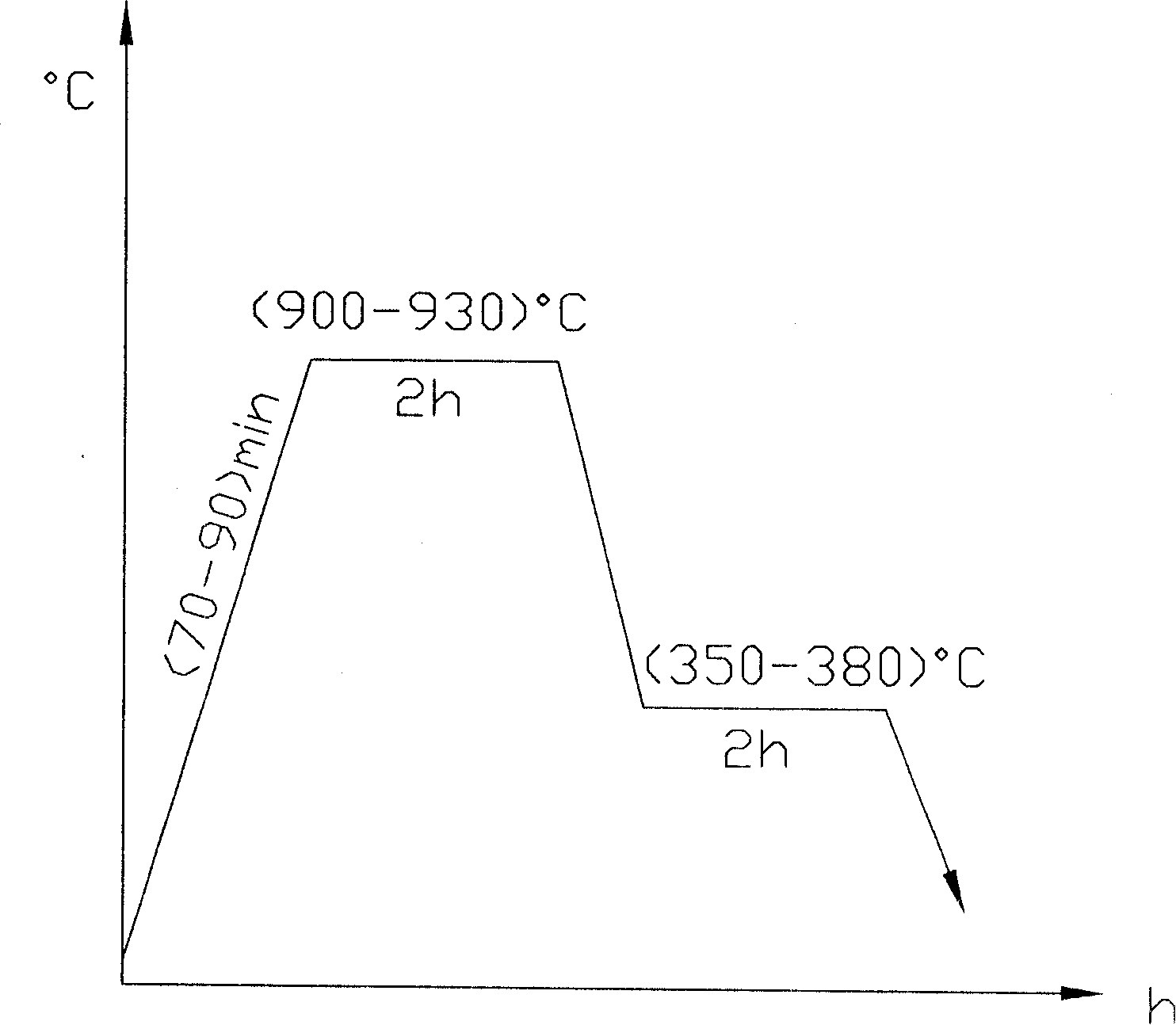Isothermal hardening bainite thin wall cylinder cover
A technology of isothermal quenching and thin-walled cylinders, applied in the direction of quenching agents, cylinders, cylinder heads, etc., can solve the problems of insufficient utilization of resources, increased pollution, and reduced power, so as to improve automobile exhaust emissions and prolong service life Life expectancy and the effect of reducing oil consumption
- Summary
- Abstract
- Description
- Claims
- Application Information
AI Technical Summary
Problems solved by technology
Method used
Image
Examples
Embodiment 1
[0012] Embodiment 1: The cylinder liner material is composed of the following components by weight percentage: C2.8%, Si1.7%, Mn0.6%, P0%, S0%, Mo0.25%, Cu0.5%, Ni0.2 %, Cr0.25%, Fe93.7%.
Embodiment 2
[0013] Embodiment 2: The cylinder liner material is composed of the following components by weight percentage: C2.9%, Si1.9%, Mn0.75%, P0.08%, S0.02%, Mo0.3%, Cu0.7% , Ni0.3%, Cr0.35%, Fe92%.
Embodiment 3
[0014] Embodiment 3: The cylinder liner material is composed of the following components by weight percentage: C3.0%, Si2.1%, Mn0.9%, P0.15%, S0.04%, Mo0.4%, Cu0.85% , Ni0.4%, Cr0.45%, Fe91.71%.
[0015] The process of the cylinder liner is as follows: place the rough-processed cylinder liner in a well-type furnace, rapidly raise the temperature to 900-930°C, keep it warm for 2 hours, then cool it to 350-380°C and enter the salt bath furnace, and keep it warm for 2 hours.
PUM
| Property | Measurement | Unit |
|---|---|---|
| tensile strength | aaaaa | aaaaa |
Abstract
Description
Claims
Application Information
 Login to View More
Login to View More - R&D
- Intellectual Property
- Life Sciences
- Materials
- Tech Scout
- Unparalleled Data Quality
- Higher Quality Content
- 60% Fewer Hallucinations
Browse by: Latest US Patents, China's latest patents, Technical Efficacy Thesaurus, Application Domain, Technology Topic, Popular Technical Reports.
© 2025 PatSnap. All rights reserved.Legal|Privacy policy|Modern Slavery Act Transparency Statement|Sitemap|About US| Contact US: help@patsnap.com

